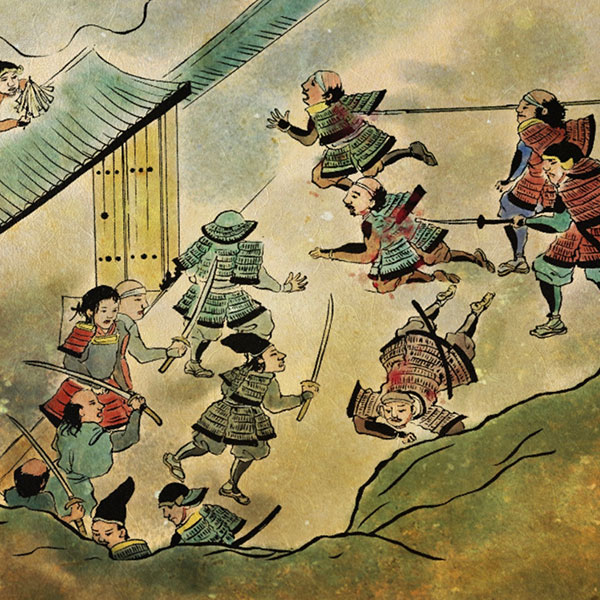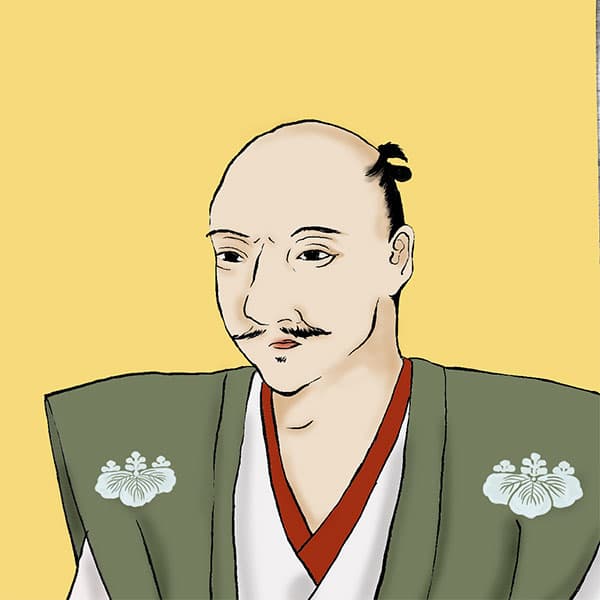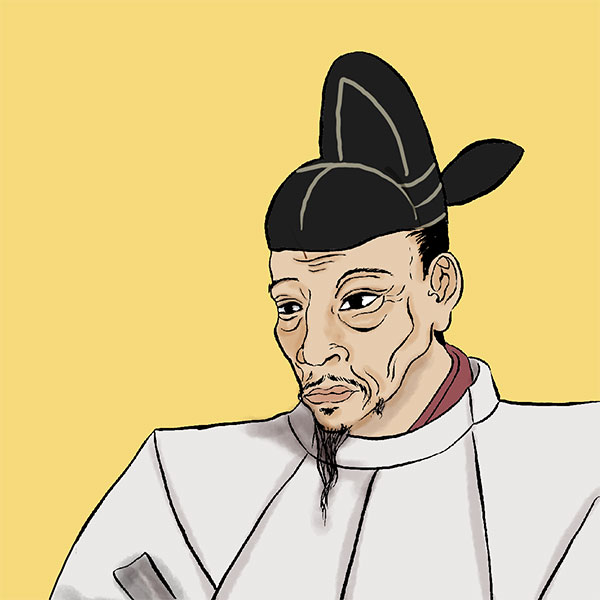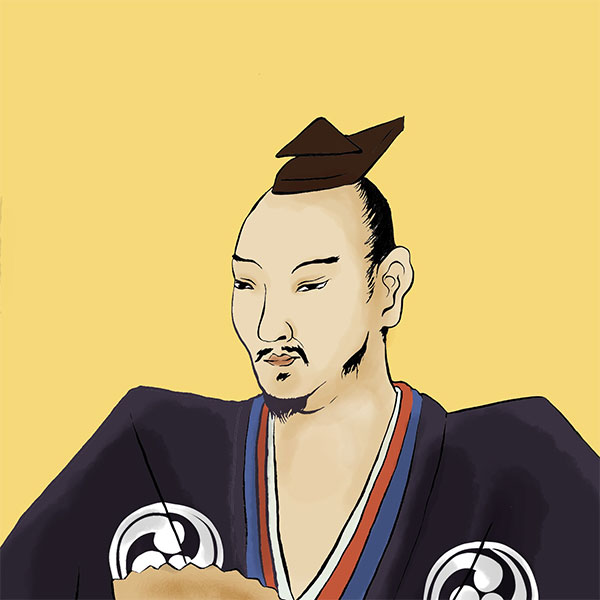Battle of Miki Castle (1/2)The siege battle was called “Miki’s dry killing”

Battle of Miki Castle
- Article category
- case file
- Incident name
- Battle of Miki Castle (1578-1580)
- place
- Hyogo prefecture
- Related castles, temples and shrines
- people involved
Toyotomi Hideyoshi, on the orders of Oda Nobunaga, attacked the Chugoku region under the influence of the Mori clan in the ``China Attack''. During the attack on China that continued until Nobunaga's death in the Honnoji Incident in June 1582, Hideyoshi made full use of military and food attacks. One of the most famous of these is the battle known as ``Miki Hansatsu,'' which attacked Miki Castle from March 29, 1578, to January 17, 1580. What kind of battle is known as one of Toyotomi Hideyoshi's three major castle attacks, along with the ``Takamatsu Water Attack'' that attacked Bitchu Takamatsu Castle in Okayama Prefecture, and the ``Thirst Killing of Tottori Castle'' that attacked Tottori Castle in Tottori Prefecture? Was it? Let's take a closer look.
Nobunaga orders Hideyoshi to attack China.
Before explaining the Battle of Miki Castle, let's briefly explain Toyotomi Hideyoshi's ``attack on China''. Why did Oda Nobunaga order Hideyoshi to attack China in the first place? The relationship between Nobunaga and the Mori clan, which ruled the Chugoku region (Sanyo-do and Sanin-do), was friendly during the Motonari Mori era. However, Motonari died in June 1571. His relationship with Terumoto Mori, who succeeded him, was initially friendly, and the two formed a military alliance, but their relationship gradually deteriorated.
The reason for this was that Yoshiaki Ashikaga, the general of the Muromachi shogunate, defected to the Mori clan. For the first time, Terumoto avoided antagonizing Nobunaga by mediating between Yoshiaki and Nobunaga. However, after that, he gradually began to compete with Nobunaga over Bizen Province (southeast of Okayama Prefecture and parts of Hyogo Prefecture) and Harima Province (southwest Hyogo Prefecture). When Yoshiaki once again asked for help from the Mori clan, Terumoto decided to oppose Nobunaga and took Yoshiaki under his wing. Yoshiaki established his base in Tomo, Bingo Province (also known as Fukuyama City, Hiroshima Prefecture) in February 1576, and began building an anti-Nobunaga regime under his government in exile. By the way, the shogunate of this era is called ``Tomo Shogunate'' after the place name.
In April of the same year, Ishiyama Hongan-ji Temple broke the peace agreement with Nobunaga and raised troops again (the Battle of Tennoji). At this time, the Mori clan supported Ishiyama Honganji Temple, defeated the Oda navy in the First Battle of Kizukawaguchi, and delivered food and other supplies to Honganji Temple. As a result, the conflict with Nobunaga intensified. In 1577, the Mori clan began a full-scale invasion of Harima Province. In response, Nobunaga ordered Toyotomi Hideyoshi to attack China, the stronghold of the Mori clan.
The night before the battle of Miki Castle: Nagaharu Bessho's defection
Thus, Toyotomi Hideyoshi began his invasion of China, entering Harima in October 1997 to pacify Harima Province, and fought repeatedly using Kuroda Kanbei's Himejiyama Castle as his base. Most of the forces in Harima had friendly relations with both the Oda and Mori clans, but many of them sided with the Oda side. The most powerful of these was the prestigious Bessho clan, which descended from the Akamatsu clan, the guardians of Harima, and ruled the entire East Harima area. The head of the Bessho clan is Nagaharu Bessho. After taking over the headship of the family in 1570, he had an audience with Nobunaga in 1573, and later joined Nobunaga in the Kishu conquest, and had been following Nobunaga for some time.
In December, Hideyoshi captured Akamatsu Masanori's Kozuki Castle (Sayo-cho, Sayo-gun, Hyogo Prefecture), which was on the Mori side, and almost conquered Harima. At this point, Choji was following Hideyoshi, but in February 1577, he defected and joined the Mori side.
The reason for Choji's betrayal is not clearly known, but according to the later military chronicle ``Bessho Chojiki'', when Hideyoshi held a strategic meeting against the Mori (Kakogawa Hōjō) at Kakogawa Castle, It seems that the incident was a contributing factor. Nagaharu's uncle Yoshichika Bessho and his vassal Harutada Miyake attended the meeting on behalf of Nagaharu. Harutada Miyake proposed a strategy, but Hideyoshi completely ignored it, and it is said that the Bessho clan remained dissatisfied with it, which became the reason for their defection. By the way, there is a theory that the cause of this was that the Bessho clan was looking down on them, which caused Hideyoshi's displeasure, and that Yoshichika told Nagaharu, ``If Hideyoshi allows him to move freely, it will bring disaster to the Bessho clan.'' There is also a theory that the Bessho clan, which was a prestigious family in Harima, did not want to follow Hideyoshi, who was only an Ashigaru native.
Additionally, there is a theory that the Battle of Kozuki Castle was the cause of the betrayal. During the battle, Hideyoshi rejected Masanori Akamatsu's offer to surrender and launched an all-out attack, killing the castle's soldiers, impaling children, and crucifying women. It is said that this action was taken to keep the Mori clan in check and to set an example to the people of Harima, who remained in limbo, but it is possible that he was fed up with the cruel actions taken at the Battle of Kakogawa. . Other factors include the fact that there were many followers of the Jodo Shinshu sect in Harima, the influence of power struggles within the Bessho clan, and active efforts by the Mori side, with whom they had originally had contact, to betray Nobunaga. It seems that due to these complex factors, the Bessho clan decided to side with the Mori side.
As the Bessho clan defected to the Mori side, various forces in the Higashi-Harima region, where the Bessho clan had influence, also followed suit, and the situation in Harima became increasingly tense. Naturally, Nobunaga orders Hideyoshi to subjugate the Bessho clan. On the other hand, Nagaharu is holed up in his stronghold, Miki Castle, and decides to wait for reinforcements from the Mori clan. This is how the Battle of Miki Castle begins.
Battle of Miki Castle ① Start of siege battle
At Miki Castle, the stronghold of the Bessho clan including Nagaharu Bessho, soldiers from Higashiharima, their families, followers of the Jodo Shinshu sect, and other people gathered in preparation for war. The number of people was approximately 7,500, as it was a so-called ``morogomori'' in which all the people of the territory were barricaded together. We need a lot of food to hold on for a long time, but there are too many people. According to one theory, the number grew to be quite large due to a strategy by the Oda side to threaten the people of the territory.
For this reason, Choji requested the cooperation of the Mori clan, and received reinforcements and provisions from Michiaki Miki, the head of the Harima Miki clan of Eiga Castle (Himeji City, Hyogo Prefecture), which was an enemy of Nobunaga and the Mori clan's stronghold. Especially. Provisions were transported by sea, unloaded at Takasago Castle and Uozumi Castle along the coast, and then brought to the castle via the Kako River and mountain passes in coordination with branch castles in Bessho. As long as this route for transporting supplies is protected, the siege can continue.
Originally, Miki Castle was built on a plateau adjacent to the Mikasa River, and was surrounded by cliffs on three sides: north, east, and west. To the south, Takaoyama Castle and Miyanokami Fortress are placed to strengthen the defense, making it difficult to attack. For this reason, Hideyoshi decided to attack Miki Castle by starting from the branch castle. On March 29, 1577, they besieged Miki Castle and captured Noguchi Castle, one of their branch castles. This is the start of the Battle of Miki Castle.
On the other hand, the Mori side, including Takakage Kobayakawa and Motoharu Yoshikawa, led 30,000 soldiers to the front with the aim of recapturing Kozuki Castle. Kozuki Castle is a castle located on the border of Harima, Mimasaka, and Bizen, and was an important base in the battle between Oda and Mori. I thought I'd get it back soon. When Toyotomi Hideyoshi learned of this, he tried to head to Kozuki Castle for reinforcements. Nobunaga also sent out reinforcements with Nobutada Oda as the commander-in-chief, but the reinforcements surrounded the branch castles to the west of Miki Castle, including Kamiyoshi Castle, Shikata Castle, and Takasago Castle. Instead of helping Kozuki Castle, they focused on capturing Miki Castle.
Hideyoshi advises Nobunaga to help Kozuki Castle, but Nobunaga orders him to prioritize the capture of Miki Castle and attack each branch castle. Because of this, Hideyoshi was forced to abandon Kozuki Castle. Kozuki Castle was protected by Katsuhisa Amago of the Oda side, but Katsuhisa surrendered to the Mori side and committed suicide in July on the condition that the lives of the castle soldiers be spared. As a result, the Amago clan was destroyed.
Battle of Miki Castle ② Araki Murashige rebels during the food raid
After the Battle of Kozuki Castle, Oda's reinforcements captured Kamiyoshi Castle, Shikata Castle, and Takasago Castle before retreating. Thus, Toyotomi Hideyoshi returned to conquering Miki Castle. It is here that the famous tactician Takenaka Hanbei is said to have recommended a strategy for attacking military supplies. In order to capture Miki Castle, which was difficult to attack, the strategy was to isolate it by dropping it from the surrounding branch castles.
- people involved

- WriterNaoko Kurimoto(Writer)I am a former travel industry magazine reporter. I have loved history, both Japanese and world history, since I was a child. I usually enjoy visiting temples and shrines, especially shrines, and often do ``pilgrimages to sacred places'' themed around historical figures. My favorite military commander is Ishida Mitsunari, my favorite castle is Kumamoto Castle, and my favorite castle ruins is Hagi Castle. My heart flutters when I see the ruins of battle castles and the stone walls of castle ruins.





